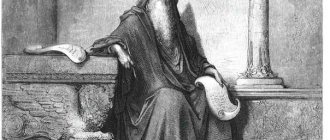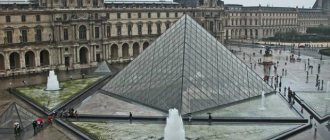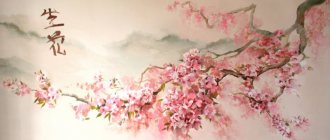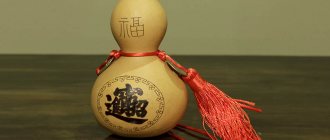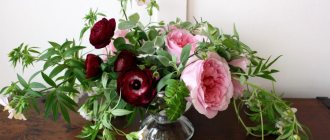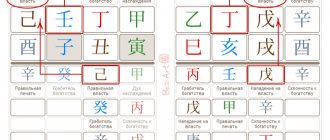Ancient legend
The history of Feng Shui is closely connected with one of the mythical emperors of China - Wu of the Xia clan. According to legend, he was working on the banks of the Yellow River when a huge turtle crawled ashore. According to old beliefs, this was a favorable sign, since in Ancient China they believed that gods lived under the shell of turtles.
However, as soon as Emperor Wu took a closer look at the guest, he saw an amazing pattern (Lo Shu) on her back. The strange 3x3 square, later called the magic square, contained numbers from 1 to 9.
The sum of all diagonals, rows and columns was 15. This fact delighted and surprised the emperor, so he instructed the court sages to study the turtle shell. It was from the magic square that Feng Shui, the classical I Ching - Book of Changes, Chinese astrology and numerology began their history.
For a long time, Feng Shui was considered a divine gift, so only members of the imperial family - divine descendants - could use it. Feng Shui masters worked for the emperor, erecting tombs and tombs, palaces and temples.
To prevent the spread of divine science among his enemies, the emperor strictly controlled the masters. They were often not allowed to leave the palace; the transfer of knowledge took place within the same family.
Belief in the power of Feng Shui was so unshakable that the secrets of the teaching were considered information of national importance. According to legend, the chief adviser to the Imperial House of Hi Tsang, named Yang Yun Sang, was able to systematize and streamline the teaching. According to his books, the first ruler of the Min dynasty, Zhou Yuanzhang, built his own palace, but then ordered the execution of all Feng Shui masters, replacing the books with fake ones, so that no one else could take advantage of the benefits granted by divine science.
The third emperor of the Ming Dynasty used forged sources when he built the Forbidden City. The latter, as is known, soon burned to the ground. Lost knowledge was rediscovered only during the Qin Dynasty.
Divine Power of the Imperial Family
The teaching of Feng Shui is surrounded by so many legends and myths that it is impossible to thoroughly understand its history. According to legend, only members of the imperial family - divine descendants - were allowed to use the gifts of ancient art. Feng Shui masters worked for them, who were forbidden to disclose the principles of the theory under penalty of death.
One day, a classic manuscript with the dogmas of Feng Shui fell into the hands of a peasant named Yu-Yang-chang, who, although poor, had remarkable intelligence and ingenuity. Having understood the theory, he arranged his simple life in accordance with the principles of Feng Shui, and his business quickly went uphill. He entered the Chinese army and was able to rise to the rank of general. His meteoric rise did not end there, and Yu-Yang-chang subsequently became emperor, changing his name to Wen.
Realizing that only with the help of ancient teachings he was able to achieve such heights, Wen obliged all Feng Shui experts in the imperial palace to serve for the benefit and prosperity of the country. At the same time, he ordered them to create confusion around the theory, so that everyone who tried to use it to harm would be confused.
The confusion continues to this day. To understand Feng Shui, you need to study it, at the same time apply it in practice, make mistakes, and draw conclusions. This is one of the reasons why, to become a master, you need to practice and see the results with your own eyes for at least 60 years - that’s how long a full cycle lasts.
Origins and origins of Feng Shui
Feng Shui is Chinese geomancy, science and art, the origins of which go back centuries.
The teaching of Feng Shui originated in Ancient China more than three thousand years ago and, passing from generation to generation, continued to develop and improve until the present day. The task of feng shui is the correct placement of objects in a person’s living space, which allows one to control the life force (qi) for the benefit of people.
The scope of feng shui extends to household items, furniture, rooms, residential buildings, workplaces, land, cemeteries, etc.
Feng Shui is in no way a collection of prejudices and superstitions, and also does not contradict the dogmas of any known religions, traditions and customs. This teaching borders on such areas of human activity and knowledge as diplomacy, ecology, politics, geography, astronomy and design. Feng Shui data is consistent with the conclusions of scientists working on the problems of terrestrial magnetism, astrophysics and psychology.
The only difference is that the principles of Feng Shui sometimes prove to be beyond logical explanation and remain a mystery to the uninitiated.
Feng Shui techniques are applicable on a variety of levels. They cover a wide range of areas of human life and are capable of adjusting the development of states, cities, communities, families and individuals.
As for individuals, Feng Shui can reach the highest degree of individualization, depending on the individual's personal requirements, wishes and criteria.
The philosophical basis of Feng Shui is also extremely extensive: it includes all the canonical Chinese ideas about the energy of qi, based on the concepts of the I Ching (the creation of which in 3322 BC is attributed to the legendary Chinese sage Fu Xi), and on the principle of Tao described in Lao Tzu's treatise Tao Te Ching (1122 BC).
These two books are the key to understanding the silent dialogue between Man and Nature, carried out through the invisible forces that govern the Universe and have a decisive influence on our destinies, bodies and minds. These two forces are Tao (the fundamental substance of the Universe) and Qi (the cosmic breath of life).
Qi - cosmic breath of life
The study of qi is the main component of Feng Shui. Qi is the life force that animates animals and plants, raises mountains on the surface of the earth and carries the waters of rivers along winding beds. Qi is the very essence of life, its driving force. And all objects in the world - mountains, rivers, trees, people, animals and stones - “inhale” qi into themselves and “exhale” it, thereby influencing each other.
The concept of qi underlies all traditional Chinese arts, from acupuncture to Feng Shui and Kung Fu. The area of manifestations of qi includes phenomena that are different in nature, such as the energy that moves waves in the ocean; the energy of fertile earth, which martial artists use when striking; the forces that acupuncture brings to life; human aura. Feng Shui specialists determine the direction of the best flows of qi, allowing a person to live calmly, harmoniously and happily.
- Chi energy is all-encompassing and elusive. It comes and goes, moves in all directions, but never disappears without a trace. A person perceives flows of qi from heaven and earth. The Chinese character "qi" has two meanings - cosmic qi and human qi. The first relates to air, steam, gases, weather and natural forces; the second – to a person’s breathing, aura, behavior and personal energy. Human qi is strongly influenced by the qi of heaven and earth.
- Human qi is formed under the influence of cosmic qi. If qi weakens, then the water stops flowing, decline and desolation sets in, and luck leaves the person. In order for a person's qi to improve, it is necessary to be near the source of cosmic qi; at the same time, the latter should proceed unhindered and smoothly. The flow of cosmic qi must be in balance. If it is too strong or too weak, it will have adverse consequences.
- The vital breath of qi is a person’s aura, his true self, his soul and energy. Some people are able to see qi. The power of chi motivates us to action and influences our relationships with other people. Every movement, every action of a person affects both himself and his environment. People are attracted to each other and repel each other, like magnets. According to the teachings of Feng Shui, people are sensitive not only to human qi, but also to the qi of their environment. Thus, atmospheric qi shapes human qi, thereby determining the fate of the individual. Feng Shui masters strive to direct harmonious flows of qi to a person and ward off harmful qi from him (or transform it into useful).
The eight main types of qi are listed below:
- Life force qi (auspicious).
- Happy Qi (auspicious).
- Smooth qi (favorable).
- Fluctuating Qi (neutral).
- Qi of evil force (unfavorable).
- Unlucky qi (unfavorable).
- Suffocating qi (unfavorable).
- Dead qi (unfavorable).
Stages of development of the Chinese teachings of Feng Shui
Times of the Three Kingdoms
At the beginning of our era, masters of the teaching about favorable landscapes were called fanshi, i.e. “experts in the teaching.” During the Han Dynasty and the Three Kingdoms (221-265), they practically merged with the Taoist sects and became a very influential force, respected at the imperial court and revered by the people.
Thanks to their deep knowledge of astronomy, geography, medicine and fortune-telling, they were welcome guests both in the palace of an appanage aristocrat and in a modest rural dwelling. The philosophical basis of fanshi was the theory of yin-yang and the five elements. The theory and practice of fortune telling using the Book of Changes (I Ching) was supplemented by a complex system of measurements, astrological calculations, as well as observations of earthly and celestial phenomena.
At that time, feng shui was known as kan-yu, where kan means “earth” (Tao of heaven), and yu means “lowlands” (Tao of earth). The purpose of Kan-yu was to study the energy of the relief and its influence on people's lives. It was at this time that the great Taoists Huang Shi Kun and Qin Wu developed the idea that mountains and rivers were filled with living, nutritional energy. The energy paths in the mountains were called "Dragon Veins", and the energy paths in the riverbeds were called "Water Dragons".
The Kan-Yu masters believed that the quality of the terrain could influence the fate of the entire kingdom. For example, if the capital is built on lands with good features such as mountains and rivers, then the country will prosper.
If the capital is built in an area that is subject to harsh winds or attracts “bad” energy, the country will suffer from disasters and disasters.
Likewise, if an emperor was buried in an area with a topography that has positive energy, his dynasty will continue and he will have many descendants. If he were buried in an area with negative energy relief, his dynasty would quickly decline.
Initially, kang-yu was used only for the burial places of the nobility to ensure the longevity of their power, but within hundreds of years, kang-yu became a way of choosing the eternal resting places of ordinary citizens.
By the end of the Han Dynasty, China had broken up into three separate kingdoms that were constantly at war with each other. The history of that time, described in the famous novel “The Three Kingdoms,” is full of disasters and upheavals. One of the most striking heroes of the novel is the real-life minister of the kingdom of Shu and Taoist magician Zhuge Liang, who knew how to control the winds and fogs.
He developed the Qimen Dongjia ("mysterious entrances" - "secretive movement") system, which was originally intended for the secret movement of troops using the "secret gates" of the earth that open and close at certain times of the year. Zhuge Liang made a significant contribution to the development of Feng Shui (then Kang Yu).
After the unification of China under the Jin dynasty (265-316), a man appeared who is considered by modern feng shui masters to be the father of geomancy. Guo Pu was a scientist, and therefore a recognized expert in choosing burial sites: his services were used by many, from the emperor to commoners.
He left behind several treatises on the classification of landscapes and the choice of burial sites. Historical records indicate that these works became classics and enjoyed great popularity.
A new milestone - the invention of the Lo-pan compass
The Tang (618-906) and Song (960-1279) dynasties were golden times for the Kang-yu. Confirmation of the extraordinary popularity of kang-yu in the Tang era is the fact that emperors often appointed geomancers as their court advisors. At this time, the Lo-pan geomantic compass was created, the base of which was divided into eighteen concentric rings and twenty-four sectors.
New schools and philosophical movements appeared in line with the Kan-Yu. Some masters based geomantic fortune-telling on the forms of natural landscapes, others paid special attention to the connection between the directions and positions of celestial bodies, and some used the Bagua trigrams as an aid to determine the energy structure of the area.
In 960, the country was unified under the Song Dynasty (960-1280). At this time, the final formation of the Taoist canon “Taozi” took place, consisting of hundreds of treatises and works of art, divided into several categories.
Thanks to the works of such diverse thinkers as Chen Tuan, Chou Dun-yi and Zhu-hsi, the theory of change was harmoniously combined with the geomantic arts, and the practice of feng shui began to be practiced not only by Taoists, but also by Buddhists and followers of Confucian teachings.
If during Han times only a few books on Kang Yu were written, then the annals of the Song Dynasty collected at least fifty treatises on the art of Feng Shui.
The appearance of “Flying Stars”
At this time, Xuan Kun, also known as “flying star feng shui,” was developed. This method uses information about the personal direction of the person living in the house, the year in which the house was built, and Bagua trigrams to predict the fate of the residents of the house. As cities expanded and more and more houses were built in less than favorable locations, the Flying Star School grew in popularity.
At the beginning of the Ming Dynasty (1368-1644), Taoist teachings and all who practiced them were subjected to severe persecution. Many prominent scholars were executed, and those who continued to practice the art of feng shui were not Taoists - they were wandering monks, minor aristocrats and artisans. They had little understanding of the philosophical foundations of Feng Shui and turned it into a purely commercial pursuit.
Their main clients were representatives of wealthy families and landowners, who hired craftsmen to select the most favorable places for the construction of houses and estates, as well as for conducting funeral rituals. “Reference books” on Feng Shui, which are collections of examples of the most successful burial places of ancient and modern times, have become very popular.
The landscape school underwent a significant simplification, but the Lo-pan geomantic compass, on the contrary, was expanded from eighteen to thirty-six rings, which led to the complication of calculations and gave them a ritual appearance. A system of “three eras” and “nine cycles” was formed, where each era consists of sixty years or three cycles of twenty years each.
During the late Ming Dynasty, the number of books on Feng Shui increased manifold.
The works of the classics of feng shui, as well as their imitators, became publicly available, as a result, many readers of these books declared themselves masters of feng shui and shamelessly made money from the ignorance and superstitions of their compatriots.
The formation of Feng Shui as an independent teaching
The last stage in the development of feng shui covers the reign of the Qing dynasty (1644-1911) and the period of the Republic of China (1911-1949). At the beginning of the Qing Dynasty, a feng shui master named Zhuo-kuang founded the Ba-zhai (School of Eight Palaces), which is used exclusively in relation to the feng shui of residential buildings. To do this, compare the favorable direction of the owner of the house, which is determined by the year of birth, with the direction of the front door of the home.
During the years of the Republic, adherents of the School of Flying Stars began to use the principles of relief classification to evaluate buildings as an addition to the compass and the system of flying stars. Adherents of the San Yuan (Three Periods) School began to focus primarily on the analysis of residential and commercial buildings, while the San He (Three Harmonies) School continued to focus exclusively on the study of mountains, valleys and waterways.
Today, San Yuan, San He, Hsuan Kung and Ba Zhai are still popular and known as the four schools of traditional Chinese Feng Shui. Now even the most basic forms of Western Feng Shui incorporate the basic concepts of these four schools.
Source: ped-kopilka.ru
https://www.youtube.com/watch?v=47Ua_0F4MO0
Arrangement of the work area
We use figurines and talismans in the workplace
How to arrange a work area so that all employees feel comfortable, business flourishes, and customers buy goods and services? The art of Feng Shui helps to do this correctly. A travel agency, office, beauty salon can be created in compliance with all the rules of the Chinese methodology. The layout of the trade hall and warehouse has its own nuances. Let's look at some examples.
Feng Shui office
To properly equip an office according to Feng Shui, you need to focus on the personality of the director and chief accountant. First, its astrological characteristics are calculated, and then the layout of the room itself begins. It is important where the building is located and what kind of entrance it has. You cannot place an office in a dark alley or dead end. Cars must freely drive up and park near the building.
Basic Rules:
- To increase profits and attract buyers in the southwest, you need to install an aquarium, fountain, and shells. Water in the Southeast works for the long term. On the same side there should be a desk for the boss and key managers responsible for the company’s work, international image, and put their signature on documents.
- Water in the northeast or northwest is not the best choice.
- If desks have sharp angles, the office needs a reshuffle. The passage to the workplace should always be free, chairs and cabinets should not be piled up, and it is always worth keeping things in order.
- Windows can be located behind employees only when there is beautiful nature (a park or square), and not a highway, a bridge, a noisy city block or a “lunar” landscape of a wasteland.
- The arrangement of items should take into account the year of birth of the boss and the year the building was erected. It is best if there are 42 objects in the room, this increases the ability to work, perseverance, and work efficiency.
- Color decisions are largely influenced by psychology. Orange encourages creativity, red excites, blue calms, and green relaxes. You can hang colored panels in different areas (orange - in the work area, blue - in the director’s office, red - at the entrance, green - in the rest room).
- To ensure that employees work at computers without problems, you need to place pots with plants nearby. It is good to create a light breeze in these places with the help of fans.
- It is advisable for the office to be low noise. For making windows and doors soundproofed.
- There are no strict prohibitions on shelves, document racks, or blinds with sharp corners. In most cases, they do not change the energy. If such things cause discomfort, it is better to replace them with furniture with fused lines.
The company's performance can be improved 2-3 weeks after the consultant has drawn up a plan and changed the office design. It largely depends on the place of residence and arrangement of the home of each employee, especially the bosses, because the home environment affects people much more than the work environment.
Feng Shui of a hair salon
It is best to choose a building that is round or horseshoe-shaped. It is good if it is built of red brick and the façade is lined with green material. It is best if there is a park or square nearby and a green alley in front of the entrance.
As for the design of the room itself, experts recommend the following:
- The door should be wide. Any shape is acceptable: arch, square, rectangle.
- You can hang air bells on the door; they protect you from evil people and neutralize negative energy from the street.
- The hallway or dressing room should be spacious and well lit.
- It is important that the visitor hall has many large windows.
- The best colors are light beige, green, peach or pink.
- There should be no beams on the walls and ceiling.
- The wood for finishing walls and floors should be smooth and free of knots.
- The office of the manager and accountant (if any) should be located in the southeast or west.
- The room where pedicures or manicures are done, where nail polish is applied, is best placed on the north or north-west side.
- The cutting area is located in the south or southwest.
- It is very important to clean the room immediately so that there is no residue of hair or nails left on the floor.
Feng Shui is used to create a company logo, select the most convenient locations for branches and correctly correlate them with the main office. You should not think that you can repair the building, make a rearrangement, and this will solve all the problems. Feng Shui only reconfigures the energy, the rest depends on the people.
Mass distribution of art
Chinese ruling class philosophy encouraged a very limited process of transmission of secret knowledge. Most often, information was passed on from the father to the eldest son. The process of learning the secrets of Feng Shui lasted for many years, even decades. But, despite this, history wanted Feng Shui to go beyond the imperial palace, and in the 19th century, beyond China.
In 1868, Reverend Yates, who came to the country as a missionary, published the first English-language article on ancient art. In 1873, Ernest J. Eitel continued the topic with a whole book.
The popularity of the destination, however, has encountered certain difficulties. After the overthrow of the imperial power and the emergence of the communist government, the use of Feng Shui became officially prohibited. Therefore, science went underground again. Dramatic events in the country caused massive flows of refugees, who brought to the new land the familiar teaching about the harmonious flow of divine energy. This is how Feng Shui appeared in Taiwan, Hong Kong, the USA, and Europe. Carefully transferred by Chinese emigrants to a foreign land, it flourished magnificently in the twentieth century.
Feng Shui teaches harmonious existence, being in balance with nature and the surrounding space, joy and harmony. This is a way to arrange your life in such a way as to receive maximum benefits and benefits. Our apartment, house, workplace, bedroom, according to the Feng Shui tradition, are a kind of tuning fork for the harmonious sound of a cosmic melody.
If we tune the space in the right way, we will get a wonderful melody, which in practice will affect the health, luck, and well-being of the residents.
Source: 1fenshui.ru
How art spread among the masses
Having left the imperial chambers, ancient art migrated to the masses, and in the middle of the 19th century, together with Chinese emigrants, it began to develop foreign lands. Thus began his triumphal march around the world. It cannot be said that the triumph was unconditional. The teaching did not find its adherents everywhere. There was a time when in many countries (even in China itself) it was banned. Only thanks to true enthusiasts, the ancient Taoist practice has survived to this day.
The origin and development of Feng Shui is surrounded by many myths, but one thing is clear - this art is not going to lose its position and continues to gain new fans all over the world.
The system of five elements is an important component of Feng Shui
More than three thousand years ago, the Chinese had already established the order of the Five Elements (Wood, Soil, Fire, Water and Metal) - forces or substances that describe all phenomena and properties in the Universe. These five elements are a manifestation of the constant interaction of the forces of yin and yang.
The five elements influence each other, generating and destroying each other in a fixed sequence.
The cycle of generation is as follows: fire creates soil (ash), soil creates metal, metal produces water (smelting, liquefaction, and evaporation), water nourishes wood (plants need water), and wood allows fire to live (combustion).
Fire – Soil – Metal – Water – Wood – Fire.
The cycle of destruction of elements occurs in a different order: the tree damages the soil (roots destroy the soil), the soil prevents water (by absorbing it), water extinguishes fire, fire destroys metal, and metal cuts down wood.
Wood – Soil – Water – Fire – Metal – Wood.
The Chinese correlate these five elements with periods of time, cardinal directions, substances, human sense organs, colors (paints), psychological states, etc.
Source: gorodnaneve.com
Compass and Feng Shui teachings
The first compass (“luo-pen”) was also invented in China, which became a tool for achieving the harmony of the Universe in arranging life on earth. Its application in practice is a complex and responsible task, which only those who have already comprehended the secrets of the teachings of Feng Shui can cope with.
The ancient Chinese compass was a square iron plate with a magnetic “spoon” freely rotating on its surface, the handle of which invariably pointed in one direction, but not to the north, but to the south, hence the name of this device - Xinan (South Pointer).
In ancient China, the compass was originally used for navigation. It was subsequently modified for use in feng shui.
Source: goroskop.guru
"I Ching" and Ba Gua
For thousands of years, the Chinese have used the text of the I Ching, the classic Book of Changes, to predict the future. The main idea of the I Ching is the constant cyclical changes occurring in the Universe. The “Book of Changes” represents the Universe as a single whole, and all objects as being in constant change.
Yin and yang, the two primordial forces that govern the Universe, symbolize harmony. They are opposite to each other. Yin is a dark force, yang is a light force; yin – passive, yang – active; yin is feminine, yang is masculine. All things in the world contain yin and yang to varying degrees. Yin and yang constantly interact, giving rise to cyclical changes. Yin and yang merge with each other in the universal state of Tao, which is of one nature and continuously creates. The practice of Feng Shui is based on the teachings of Tao - Taoism in its esoteric and popular forms.
The symbols of the “Book of Changes” contain cosmic power and energy. Yang power is represented by a continuous line (_____), and yin power is represented by a broken line (__ __). From the great polar symbols of yin and yang, four double symbols and eight trigrams were developed. (Later, the eight trigrams evolved and turned into sixty-four hexagrams of the “Book of Changes.”)
The eight trigrams form a pattern known as ba gua. There are two types of ba gua placement - ancient and modern.
The ancient ba gua diagram reflects the original arrangement of the eight trigrams, and the modern diagram is a rearrangement of the ancient version and includes parallels of trigrams with seasons, months, colors, natural elements, etc., as well as with family members.
About yin and yang
The natural interaction of the forces of yin and yang must be maintained at all levels, starting with the individual. A person's character and health reflect the movement of yin and yang in his body, which in turn is influenced by the objects around him, the area in which he lives, and the degree to which he has subjected his natural environment to changes.
In this regard, a whole range of problems arises. At an ecological level, large-scale cutting down of trees or diversion of river channels can lead to floods or droughts. On a personal level, problems range from increased dampness in the home to bouts of insomnia, from career setbacks to deteriorating health.
A feng shui specialist working on an individual level can suggest various ways to correct these problems. In the worst case scenario, he may suggest moving the house to another location altogether, but such situations are extremely rare. As a rule, the necessary changes do not require large financial investments and do not take much time.
The art of Feng Shui is highly respected in many areas of the Far East, especially Hong Kong. A Feng Shui master usually takes as much part in the planning of a building as an architect.
Sometimes during construction work, consultations with a geomancer are constantly used. If the business of a company is in decline, the owners of the company often turn to a Feng Shui master for advice in order to improve the situation; sometimes it is enough to move the catalog boxes or move the doorway to another part of the wall.
In the case of a child suffering from chronic illness or doing poorly at school, the solution to the problem may simply be related to the size of the study table or the position of the bed in relation to the window. Even in situations where there is no room to rearrange the furniture and changes in the building structure are impossible, it is almost always possible to find a partial solution to the problem.
A properly placed mirror or a living green plant can restore harmony to your home.
Tips for attracting wealth
Feng Shui at home says that wealth only comes through perfectly clear windows. Many may say that they are tired at work and they don’t have time to regularly clean their apartment, but those who want to attract good luck and money to their home will have to forget about laziness.
A broken rug in front of the door, clean window glass and things lying in their places will not scare away the beneficial energy of Qi, but, on the contrary, will lure it into the home.
A beautiful aquarium or paintings with clear streams and lakes can increase the positive energy in the apartment. The direction of water on them should go inside the house, and not outside, so as not to wash away the wealth from it. The same applies to the location of the mirror. It cannot be hung on the wall opposite the front door, otherwise it will reflect Qi and will not let it into the house.
The zone responsible for wealth is the southeastern part of the home. It is in it that you should put more flowers on the windows, including a money tree, and put a few coins. It is worth adding to the interior the colors of the metals used for stamping coins: yellow, orange and silver.
Feng Shui in modern times
Today everyone can join the art of Feng Shui. You don't have to be a master to understand the basic practical techniques of Feng Shui, but you will have to learn some of the principles and laws of this ancient art.
Nowadays, Feng Shui is becoming increasingly popular. Some consider it their hobby and, having a creative approach to the issue, begin to practice it in their home, with relatives or friends, trying to bring the decor of the rooms to absolute harmony, while many have chosen the profession of Feng Shui consultant and practice Feng Shui professionally.
Every day this profession is becoming more and more in demand. A Feng Shui specialist, having knowledge about the balance of forces such as Yin and Yang, about the flow of energy “Qi” that runs along the landscape and penetrates into all structures, can give recommendations in the construction of buildings and structures, as well as help equip existing ones houses, apartments and offices according to all the rules of Feng Shui.
The popularity of the ancient Chinese art of Feng Shui in the West is rapidly growing, because it helps develop the practice of traditional geomancy, which does not provide such a deep understanding of the relationships between people, their environment and various structures.
Today, the Feng Shui knowledge system is used both on a city scale and on the scale of an individual house or apartment, room or piece of furniture.
https://www.youtube.com/watch?v=gDNNGb80rlw
The art of Feng Shui combines the ideas of Taoism, Buddhism, as well as Chinese folk magic. Its effect extends to the superstitious, pragmatic, sacred, profane, emotional and even physical levels.
Source: fanshui.web-3.ru
Tips for arranging an apartment
Even seemingly insignificant details when decorating a home play a big role in harmonizing energy flows. A few tips will help you place furniture correctly and get rid of objects that attract Sha. A clear proof that the right effect has been achieved will be the desire of the apartment owners to return to it.
- In no case should you install bulky cabinets or create mezzanines near the front door and passages to rooms. Qi should flow freely throughout the space. It is difficult for it to fill sharp corners, so you should not get carried away with them in the interior.
- Repairs need to be carried out more often, as dust and cracks cause stagnation of energy and have a bad effect on the atmosphere of the apartment.
- Broken dishes are a bad omen among many nations. In the teachings of Feng Shui, it is absolutely prohibited. The sooner you can get rid of it, the sooner joy and abundance will come to your home.
- Getting rid of unnecessary trash, old clothes and broken objects is also necessary to establish harmony. If something is expensive and it would be a shame to throw it away, it should be cleaned and repaired.
- Doors to rooms should open inward, and only the door to the bathroom should open outward.
- Flowers and animals attract Qi. If the plants take root well and bloom, the energy resource of the home is high.

